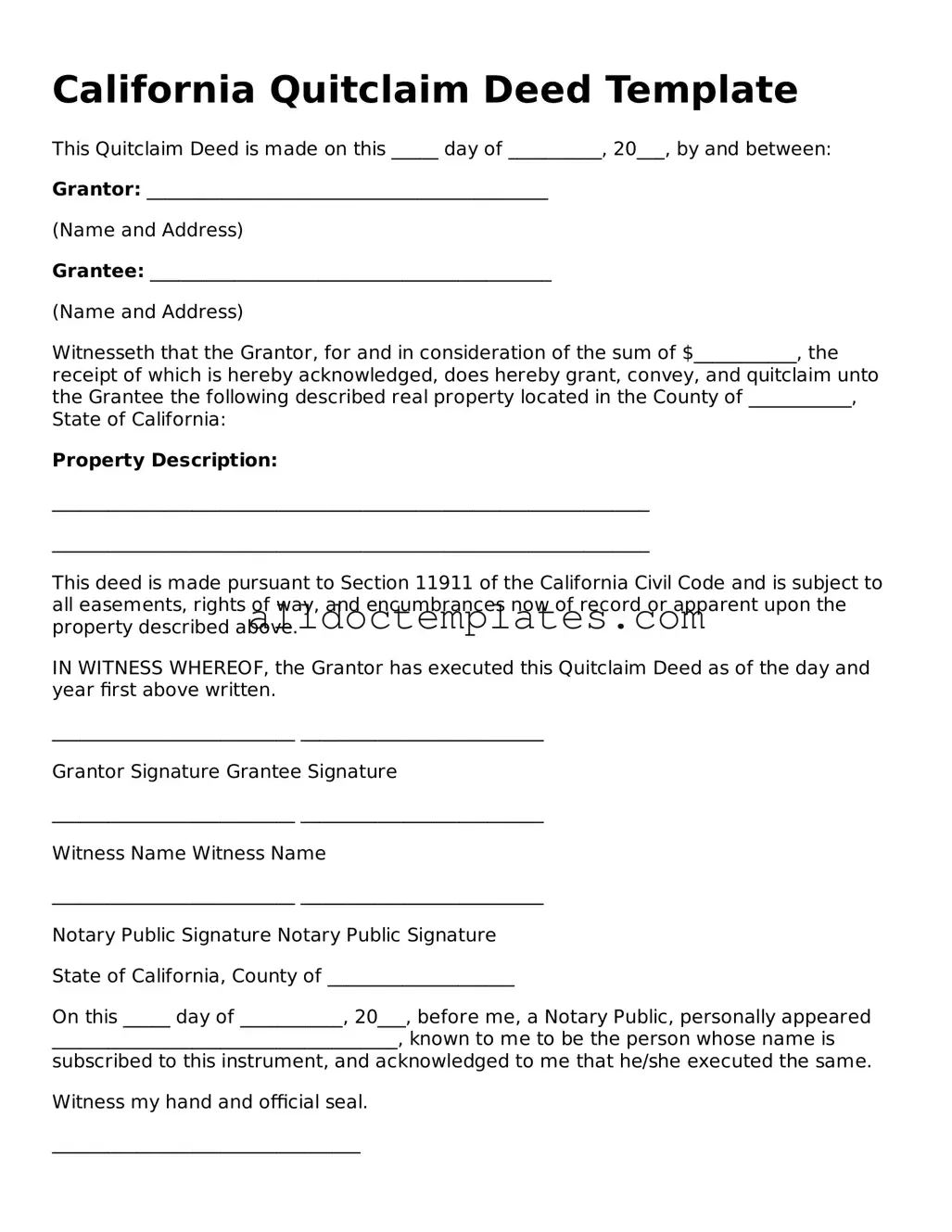California Quitclaim Deed Template
This Quitclaim Deed is made on this _____ day of __________, 20___, by and between:
Grantor: ___________________________________________
(Name and Address)
Grantee: ___________________________________________
(Name and Address)
Witnesseth that the Grantor, for and in consideration of the sum of $___________, the receipt of which is hereby acknowledged, does hereby grant, convey, and quitclaim unto the Grantee the following described real property located in the County of ___________, State of California:
Property Description:
________________________________________________________________
________________________________________________________________
This deed is made pursuant to Section 11911 of the California Civil Code and is subject to all easements, rights of way, and encumbrances now of record or apparent upon the property described above.
IN WITNESS WHEREOF, the Grantor has executed this Quitclaim Deed as of the day and year first above written.
__________________________ __________________________
Grantor Signature Grantee Signature
__________________________ __________________________
Witness Name Witness Name
__________________________ __________________________
Notary Public Signature Notary Public Signature
State of California, County of ____________________
On this _____ day of ___________, 20___, before me, a Notary Public, personally appeared _____________________________________, known to me to be the person whose name is subscribed to this instrument, and acknowledged to me that he/she executed the same.
Witness my hand and official seal.
_________________________________
Notary Public, State of California
